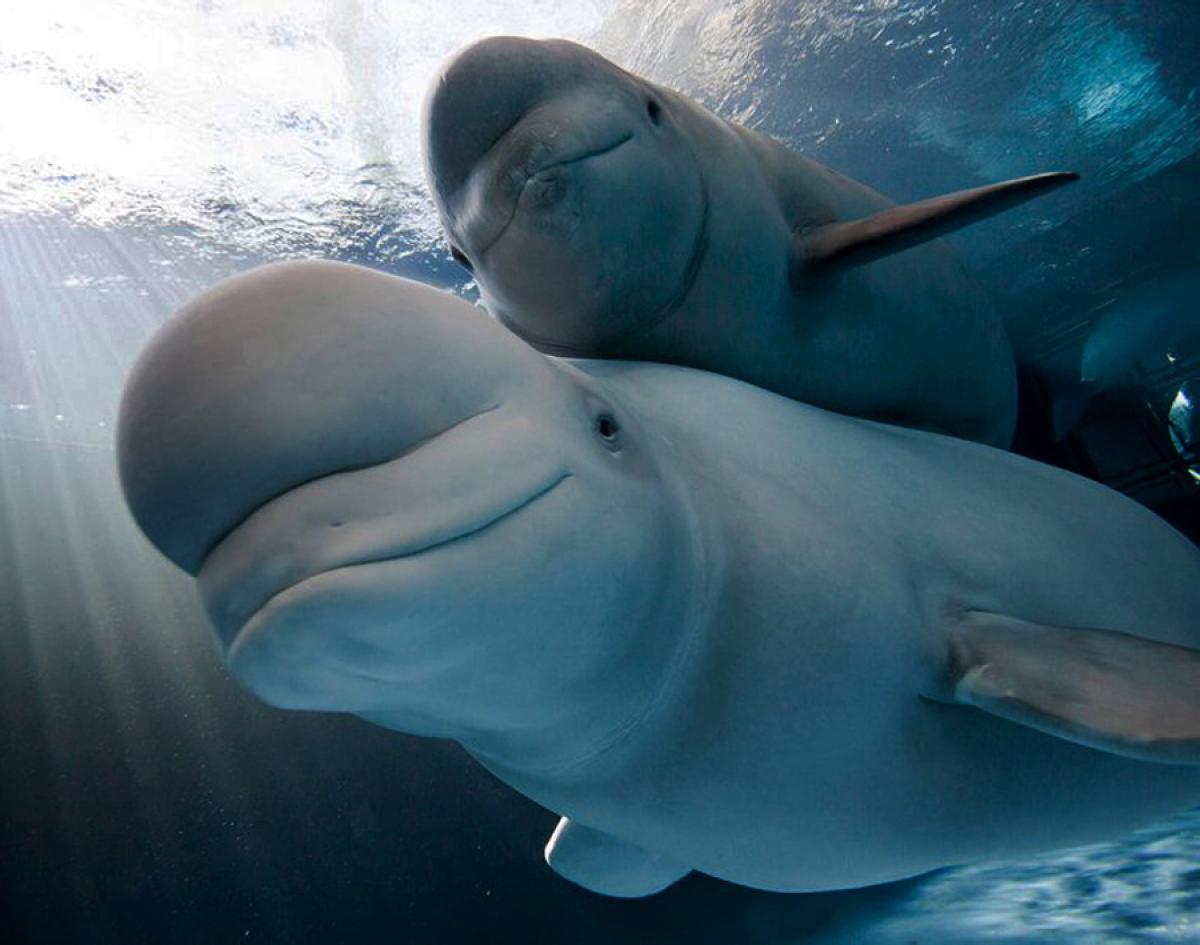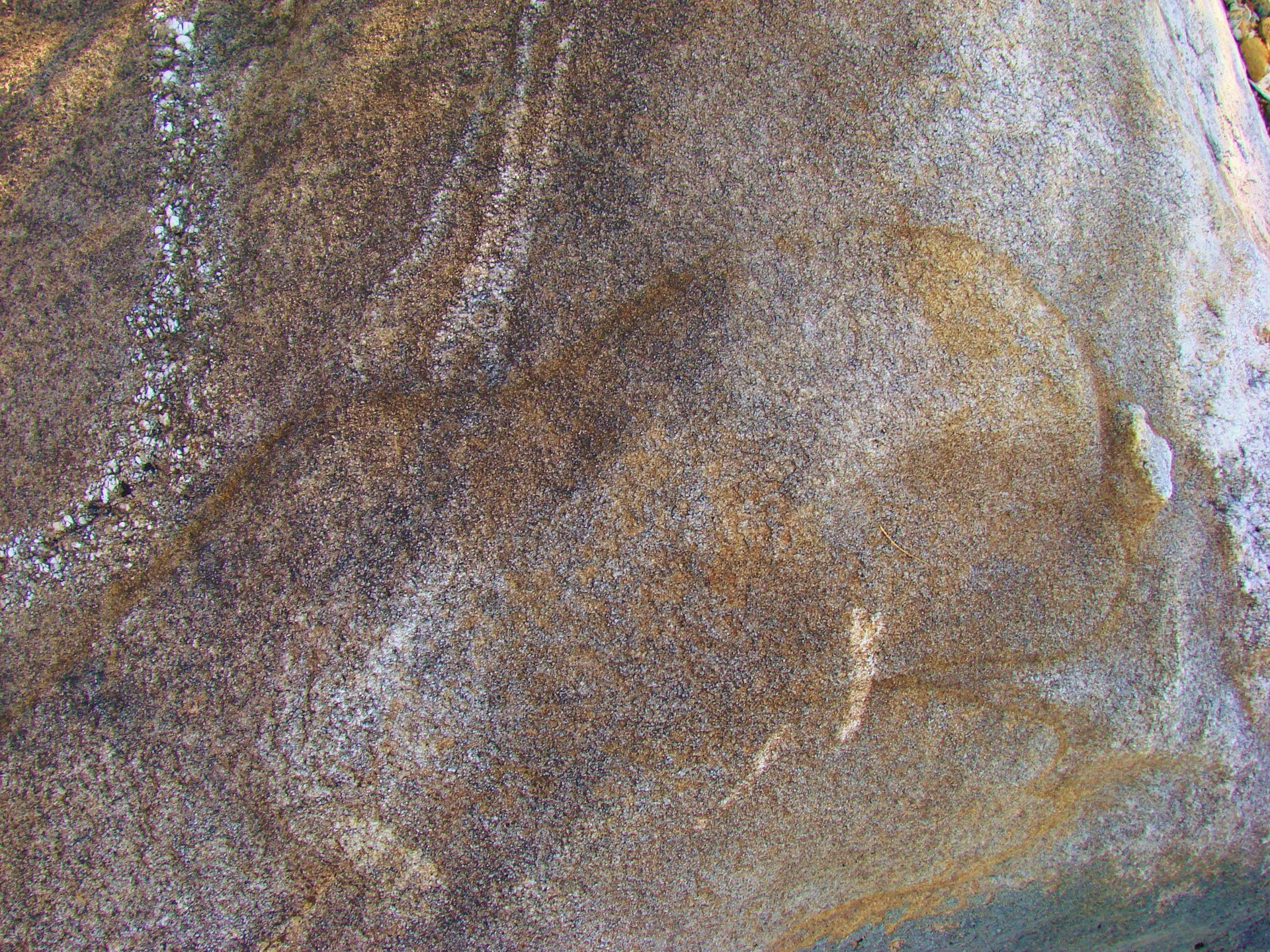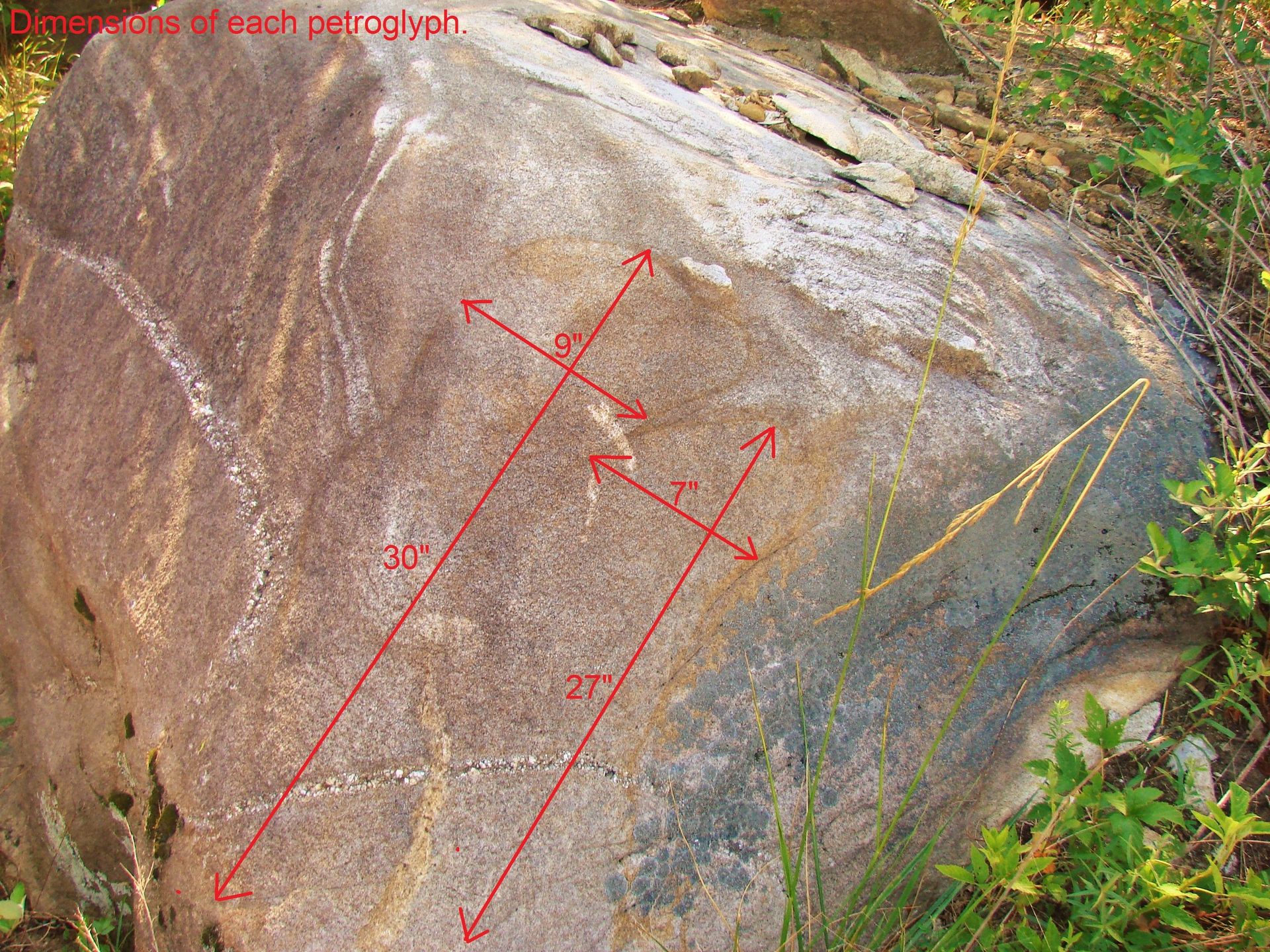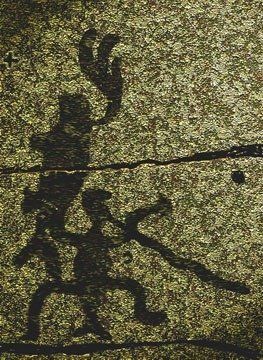
Beluga Whale Petroglyph
Beluga Whale Petroglyph
Petroglphys have long been a mystery to most. Scholars spend countless hours theorizing the possible meaning to the strange shapes and unfamiliar characters. And if you travel between the galaxy's in your search for the true meaning behind the rock art, you may just wind up with your own television program.
Much effort has gone into preserving many of these wonderful forms of communication and art. In the United States alone you will discover that each state has either a private group of individuals spending countless hours attempting to preserve and protect them or you may find that some are protected under the laws of that State while some remain under the protection of the Federal Government. The question remains, what separates one petroglyph from another to demonstrate a need for protection ?
There is no shortage of websites dedicated to petroglphys found within the State of Georgia. One search alone on the internet brings up numerous websites with hundreds of possibilities, dedicated to just one area in Union County titled Track Rock Gap(9Un367) a protected site that has come under controversy in the past few years. Another group of stones in Georgia that has received attention are
what some call the Star Map stones. One being located in the Funk Heritage Museum. Another lying on the front lawn of the University of Georgia, while yet more still in their original location of Panther Creek. In researching the original locations of these petroglyphs you will find that they were not always as easily accessible to be seen.
Though one amazing discovery less than 20 minutes from Athens Georgia, has been sitting beside a major four lane hwy watching countless cars drive buy for years while going completely unnoticed. That is until a member of the Indigenous Peoples Research Foundation stopped to take a look at a few of the many large boulders sitting some twenty yards of the side of the highway last summer. That's when he took notice of a strange carving in one of the rocks. As he explained, “It smiled at me.” Upon further research and various forms of photography, the petroglyph shares a resemblance to a Beluga Whale. A whale not commonly believed to have inhabited the coastal waters of the southeast.
Though in reviewing the accounts of the naturalist that accompanied some first European explorers, many species no longer inhabit waters where they used to be found.
Looking at the petroglyph, it is easy to discern two separate carvings. Possibly the representation of two Belugas or another species of whale, swimming side by side, or possibly a mother and it's calf. Either of the two possibilities is simply an amazing discovery. The patina of the carvings makes one believe that they were carved at the same time and are extremely old. What is more amazing is that the only other petroglyphs discovered around the globe that is believed to represent Beluga whales are in northwest Russia. These whales have been revered in that part of the world for thousands of years. Beluga comes from the Russian word belukha, which means "white one." Three hundred miles due north of Saint Petersburg in Russia, the Belomorsko River empties into the finger. The countryside surrounding Sorokka possesses a continuous history, some might even stretch the point and say a written history, that reaches at least as far back in time as any in Egypt or China. The many Petroglyphs carved into cliff faces and boulders throughout this land are ascribed to Finno-Ugrian tribes people who have inhabited this northern land for at least the past four or five thousand years. Petroglphys can be seen on cliffs scoured smooth as ceramic by the retreating glaciers that fled this land after the last ice age. They chronicle the daily life of an advanced hunting culture.
Writer and environmental activist Jim Nollman noted in his 1996 book “Not Talking to Beluga” about these particular petroglyphs, “Several petroglyphs show the hunting of Beluga Whales. One of the most dramatic and artful of these drawings shows twelve men in a boat of indeterminate construction. A man at the bow holds a harpoon aloft. Several thick lines already lead from the boat into the back of the wounded animal. Other pictures show the villagers cutting up a whale for distribution. Moose, geese, swans, reindeer can also be seen, these are the common species upon which Northern hunters have always relied for subsistence. Another unique picture dated to 3000-3500 BC, displays the life of a single individual, perhaps a mythic hero, painted in panels traced along a counter clockwise spiral. The outer edge displays what could easily be interpreted as a birth. Then, traveling down ward along the spiral, our hero acquires various tools. He also starts to interact with other people, the heavens, begins to hunt birds, then small mammals, finally moose. The spiral starts to climb again, perhaps signifying that his hunting days are starting to wane. Strange objects appear that look like ping-pong paddles and whose meaning and purpose can only be guessed. Finally, turning inward again, we arrive at the center of the spiral. This is a place signifying death or secondarily, spiritual transformation. Here, the human is depicted at the end of his life’s journey riding on the back of a whale. Casting this final symbol onto the web of ancient Finnish religion, we learn that the culture of these ancient tribes people was totemic in spirit, and shamanic in leadership. Just as eating the prey was considered an act of taking the animal spirit into oneself, so reincarnation was likewise was understood as a cyclical transformation from predator to prey back to predator, over and over again, forever.”
It is easy to discern the spiritual importance of the Beluga to the Native People from the time spent creating the rock carvings. Though Belugas played another role in later times that was not treated with the same reverence. A diary written by an 11 year old Sarah Putnam dated from 1861 currently on file with the Massachusetts Historical Society, tells of this young girls first experience with seeing a Beluga Whale, “I went again to the Aquarial Gardens and there saw the Whale being driven by a girl. She was in a boat and the Whale was fastened to the boat by a pair of rains [sic], and a collar, which was fastened round his neck. The men had to chase him before they could put on the collar.” What Sarah had viewed that day in 1861 was one of the first Belugas to be captured and displayed in the United States.
For several years, entrepreneurs and adventurers, including the infamous P.T. Barnum, had been scrambling to be the first to exhibit whales. At any expense, even to the whale itself. “ Even in this brief period, thousands availed themselves of the opportunity of witnessing this rare sight. Since August I have brought two more whales to New York, at an enormous expense, but both died before I could get them into the museum.” P.T. Barnum.
For many years following there was no end to the horrific tales of the many ways that big business attempted to keep Belugas alive in museums, circuses, zoo's and aquariums. All for profit. Even today with more advanced techniques and better understanding of the Beluga themselves, today's marine zoos continue to have serious problems keeping Belugas alive. While in the wild they can live up to 60 years, in captivity few live beyond 25 years of age. And many baby Belugas born in captivity don't survive beyond a few days.
Another 6000 year old rock carving in northwest Russia shows a woman, perhaps a shaman, communicating with a Beluga whale. The carving was interpreted in many different ways, but agreed that the art represents the ability of both creatures to communicate with each other. Maybe it's this special gift of communication of the Beluga that fascinates the many who continue to try and fill aquariums with these beautiful creatures. But the cost of that desire has been at the expense of the Beluga whale.
Each artist representation of the whale petroglyphs is courtesy of Jim Nollman.
Though it cannot be said with all certainty that the artist who chose to create this carving had the Beluga in mind when he undertook the task, it can be said that if it was the Beluga he had in mind, he could have chose no more amazing creature.
As with the many petroglyphs currently being protected in the State of Georgia, members of the Indigenous Peoples Research Foundation feel that this particular petroglyph deserves to be treated equally as important as those mentioned in the onset. And we will continue to work on the preservation of this magnificent work of art.
The writer wishes to acknowledge that this article is written from the pure speculative view of several people involved. As stated in the beginning of the article, one can never be completely positive about identifying rock art. That is the reason we always welcome the views of others to gain a better perspective.
If you would like more information on how you can help in preserving this or any Native American artifact, please contact us at this website.
Mission Statement
The Foundation was established to protect and research intriguing artifacts recovered from several locations in the Southeastern region of North America, with the goals of more fully understanding the pre-Columbian history of North American indigenous cultures and finding a public venue for their permanent display.
Many of the artifacts illustrate there is still much to be learned about the pre-Columbian history of the region.
It is hoped that our efforts will incrementally be helpful in providing a clearer picture of this fascinating period.
We invite you to review these artifacts in our developing website, and contact us with comments or questions.
© 2024
All Rights Reserved | Indigenous Peoples Research Foundation
ADLC Web Design
| Gwinnett, GA







